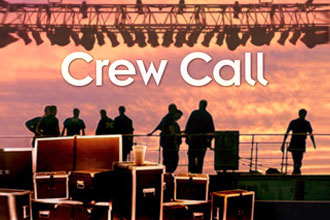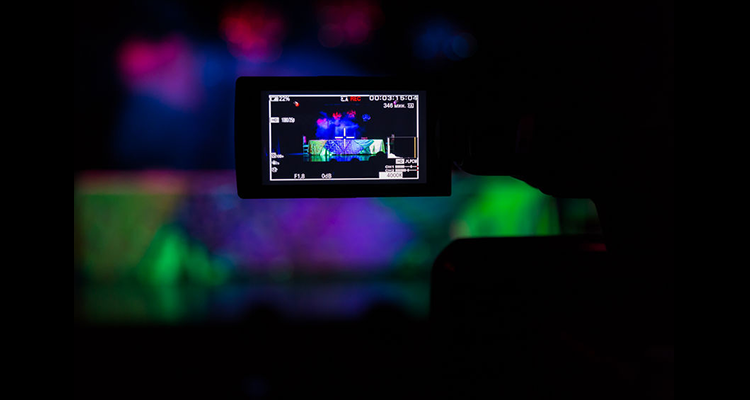On Privacy, Convenience and Pirate Scanners

 Last week, I returned from InfoComm. It was the usual manic event, with the usual results. 39,000 people crowded the aisles to see products and services from over 400 suppliers. Many, many of us took the opportunity to rub elbows with our peers from around the world, increasing the sale of beer and soft drinks radically in the always overpriced Orlando restaurants.
Last week, I returned from InfoComm. It was the usual manic event, with the usual results. 39,000 people crowded the aisles to see products and services from over 400 suppliers. Many, many of us took the opportunity to rub elbows with our peers from around the world, increasing the sale of beer and soft drinks radically in the always overpriced Orlando restaurants.
One change, however, was welcome. For the first time I took home no printed literature. I have complained for years about the ridiculous tendency of trade shows to send you home with expensively printed color literature that sits in the corner of the office, still in its expensively printed tradeshow bag, which is never read. This year, instead, the QR code had definitely taken root everywhere, coupled with inexpensive scanning systems that use smart phones. In fact, unlike the days of the magstripe, codes could be scanned without your permission by some enterprising young booth person who would run up, scan you, and run on to the next person before you even had a chance to ask what company they were from. In fact, as I roamed the show interviewing exhibitors and attendees, (along with my intrepid assistant Leah McCann), I actually saw instances of people running around and scanning people in booths that were not their own. I began to refer to them as “pirate scanners.”
As an AV person who for many years has been heavily involved in the trade show market, this brings up (with some new emphasis) a subject that I have been thinking and writing about for many years. And that is the subject of the commercial invasion of privacy.
In the old days, we picked up literature. We placed it in our expensively printed throw away tradeshow literature bag (which was a huge expenditure for the company that provided them, as along with the bags they had to pay a premium fee to the trade show promoter for the privilege of passing them out). But this meant that we were selective about the literature that we picked up, as we would have to carry it all day. OK, maybe some of it was shoved into our bag by “pirate tradeshow literature distributors” as we were standing in an aisle talking. But most of it, we picked up voluntarily, which meant we may have actually read some of it.
Contrast this with today.
The convenience of a tradeshow badge with an optically scannable code is undeniable. But let me point out some of the negatives that we have felt over the last few years as these technologies took over from traditional methods of information distribution at trade shows.
It’s just too easy.
Realistically, I didn’t see anybody saying, “No, you may not scan my badge.” And yet, if you think about it, we now say yes to people whose literature we would have refused under the old circumstances. Is that bad? Depends on how much email you want to get, and how many webinars you want to be invited to.
It’s the gift that keeps on giving.
Unlike picking up literature at a “old style” tradeshow, these scans put you on a list, which is often hard to get taken off of. I tried with several vendors after last year, and the most common answer that I got was, “Oh that was a list from a tradeshow — I’m not even sure who is handling that.”
Author’s note: In this instance, I was very proud to be working with rAVe [Publications] at the show. rAVe has led our industry in the promotion of easy opt-in standards and policies, and their staff has always displayed great consciousness of how the lists that they gather are used. -JRR
Tradeshow Overshare
OK, I opted in when I allowed my badge to be scanned. But often, I expected that this transaction would be similar to an “old style” tradeshow transaction, where they would simply send me information about the product I expressed an interest in. But most of them don’t maintain good segregation of these lists, meaning you are sent copious numbers of emails about products that you were not interested in, from which you have to sort out the information you wanted.
Taking It Personally
But it’s not just the email — it’s the fact that the email contains tags and links that take you to the information, allowing you to acquire a cookie in the process that continues to personalize your web experience no matter where you go. In fact, no sooner did I sign up for InfoComm than I began to notice that no matter where I went on the web I was seeing banner ads about the show and its sponsors. They continue now even though the show is over. One of them is from a distributor that I use regularly, which won’t go away and takes up my screen real estate with a teaser ad about a product I have no interest in. Sure, I could dump their cookies and make it stop, but often those cookies are very difficult to identify, and simply clearing them all would stop the action for things that I opted into.
In fact, one of the things that these lists do is enable a lot of junk to get around my spam filter, because it has been personalized enough to look original and fool the filter.
Now, there are a lot of methods for dealing with electronic distribution of information and the information overload that it causes. the best that I know of are:
- Be careful about the amount of information that you give during your sign-up for a tradeshow. For all of the shows that I attend other than InfoComm (where I have enough of a general professional interest to be broadly subscribed), I usually create a separate email alias that I can later dump if I am getting too much input to my email in basket or my web browser.
- Subscribe to a good general news digest site (rAVe, of course, comes to mind) that bring you the important information all in one place, rather than subscribing to individual sites and manufacturers which would get you that information many many times.
- And, just as a tip, in addition to email aliases for specific shows, maintain separate professional and personal online identities. Your professional contacts are interested in you professionally, but you don’t necessarily want them to see the photos from the last bachelor or bachelorette party you attended.
For many years, I wondered about the future of the tradeshow, and how the electronic distribution of information would affect it. Many people expected the demise of the large commercial show due to the easy availability of this information. It is obvious the tradeshow planners have done well in planning how to implement information technology, and to survive the digital storm. I don’t see trade shows going away.
But the technologies we have talked about this month are only the beginning. I have been part of several experiments that will take this technology to the next level, in ways that many people don’t understand. Stay tuned for next month, when I will speak with a couple of real experts about how the latest in AV, scanning, and biometrics will affect the future of the tradeshow and of our professional communications.





